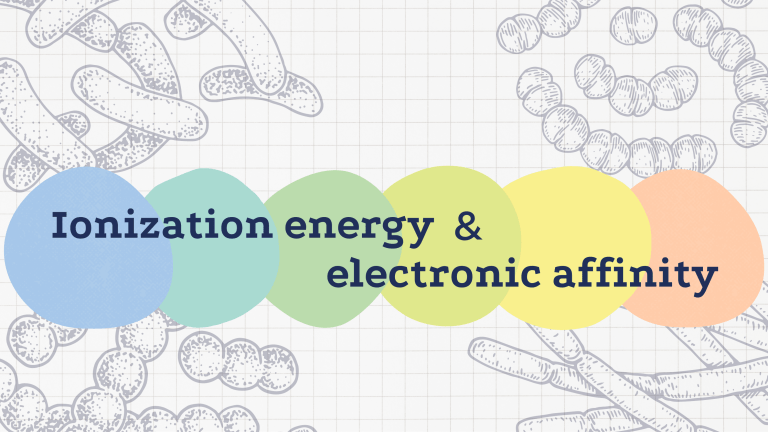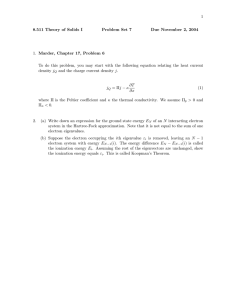
Ionization energy & electronic affinity team members Sofia Parral Ivana Guerrero Valeria López Renata Manrique Gabriela Zúñiga Camila Gómez Valeria Pastrana ionization energy Is the amount of energy required to dislodge the electron with the weakest nuclear force of attraction Therefore an atom, losing an electron, becomes a positively charged ion (cation) because the number of protons is bigger than the number of its electrons. atom + energy The energy required to dislodge the least strongly attached electron from an atom is known as the first ionization energy. More energy is required to dislodge each additional electron, that is, the second and third ionization energy; this is because the positive charge increases by one unit with each subsequent electron that is removed. 0 Na(g) + energy cation + electron Na+(g) + e Ionization energy In the periodic table, the ionization energy of elements increases from left to right within a period and decreases from top to bottom within a group. Electron affinity Electron affinity is the amount of energy released when an atom in a gas state wins an extra electron. It becomes a negative ion (anion): Atom + electron Cl + e = = Anion + energy Cl- + energy In the periodic table, electron affinity increases from left to right within a period and decreases from top to bottom within a group. Decreases electron affinity ¡Thank you!



